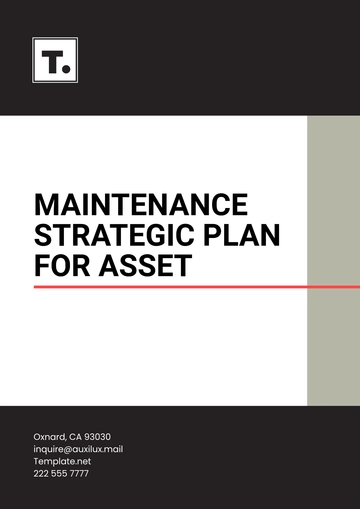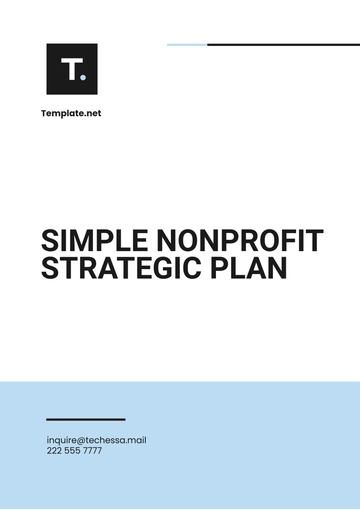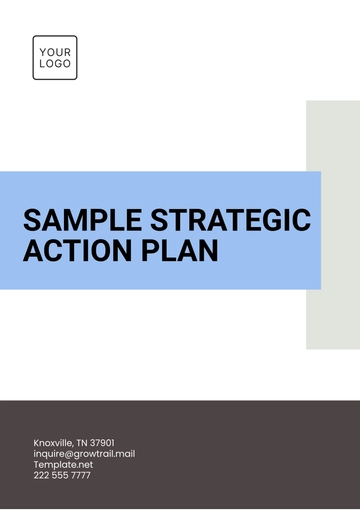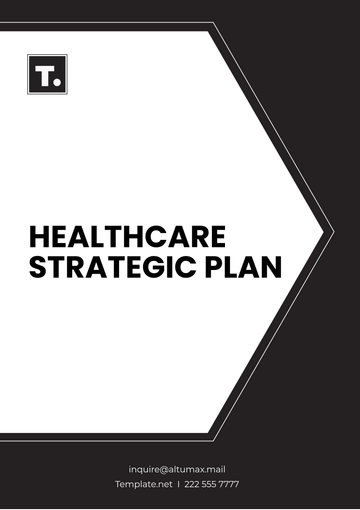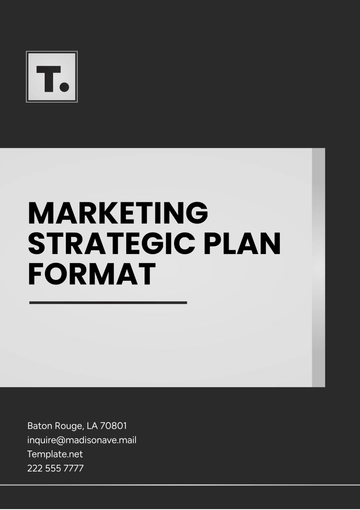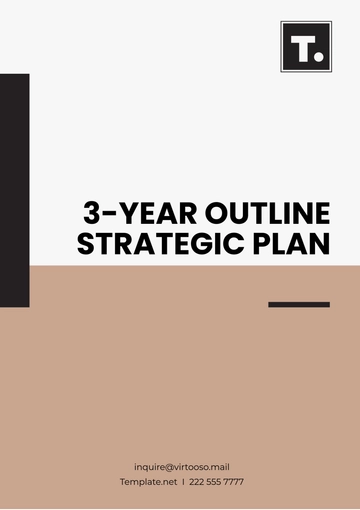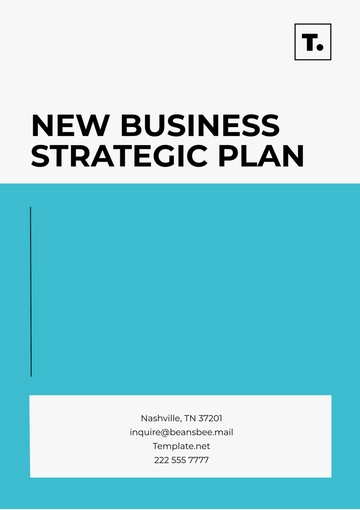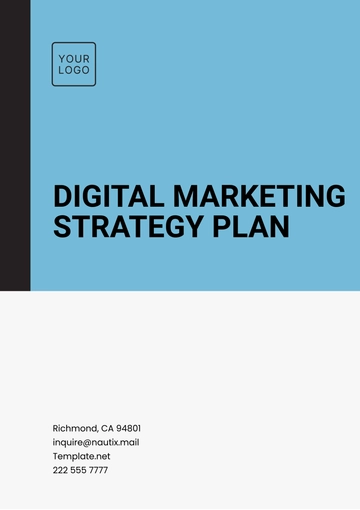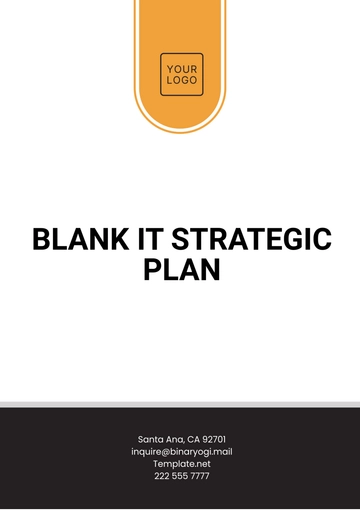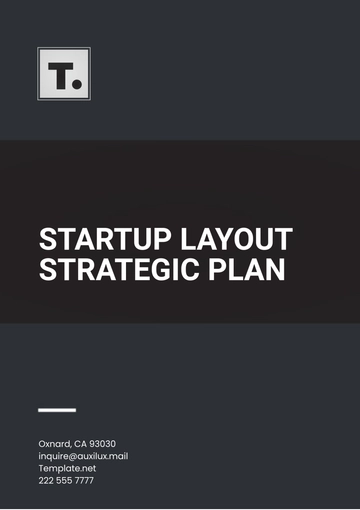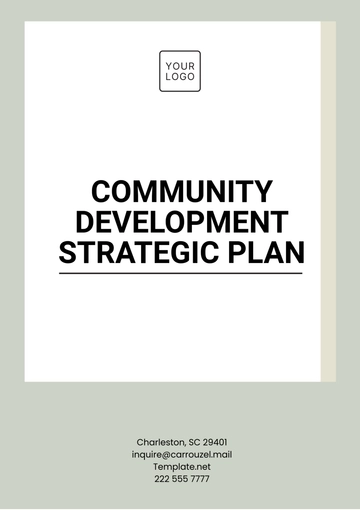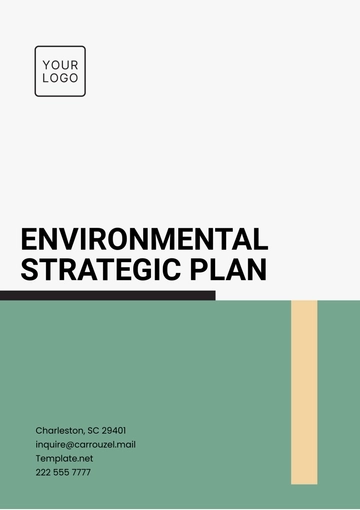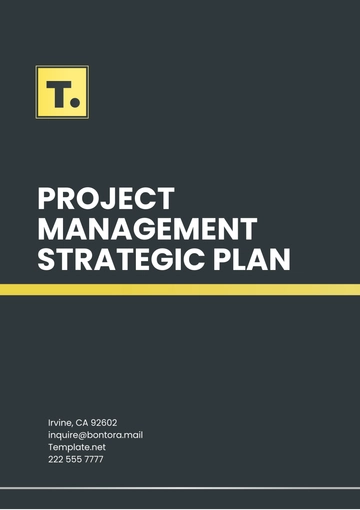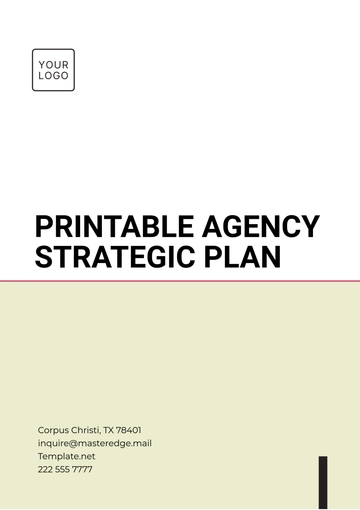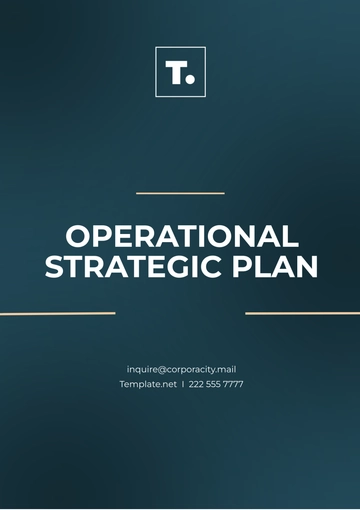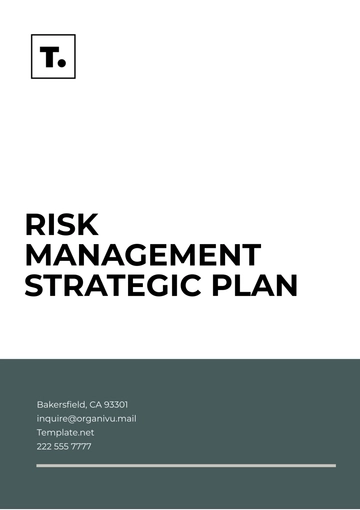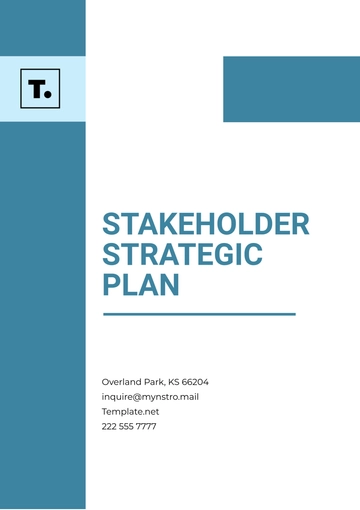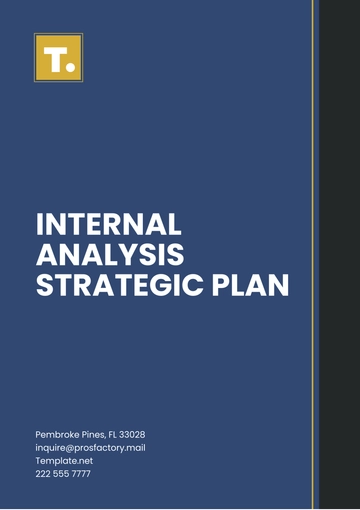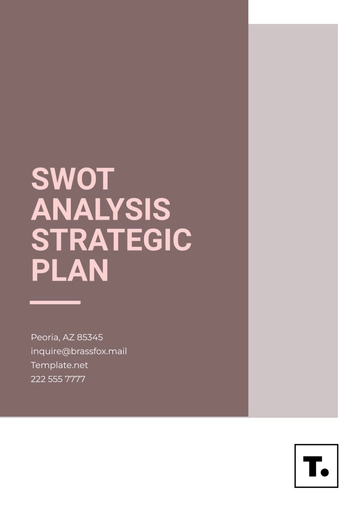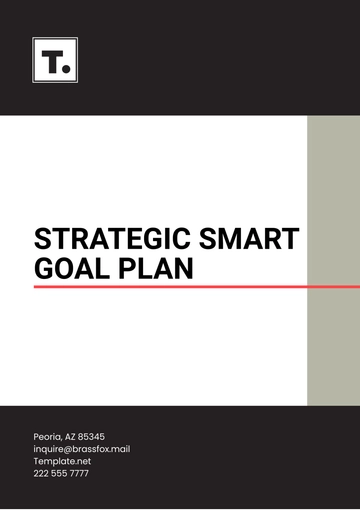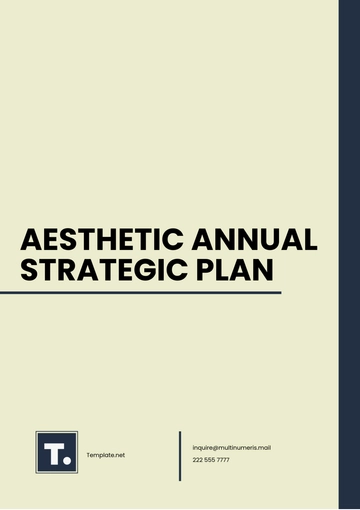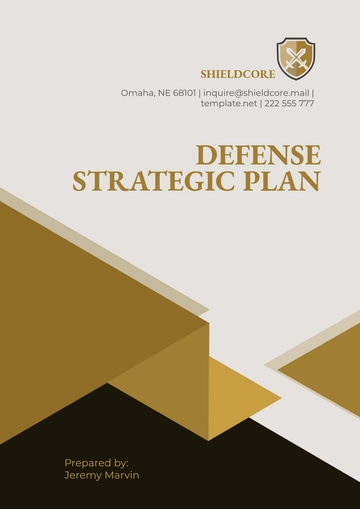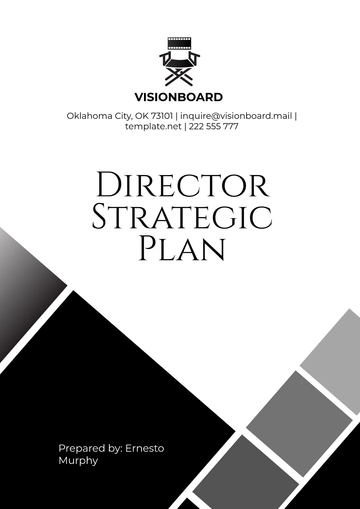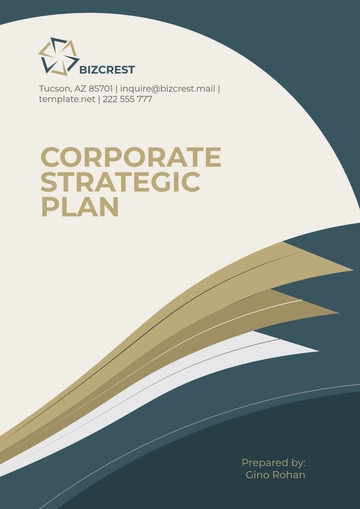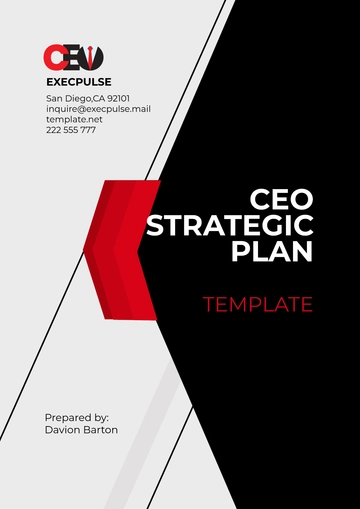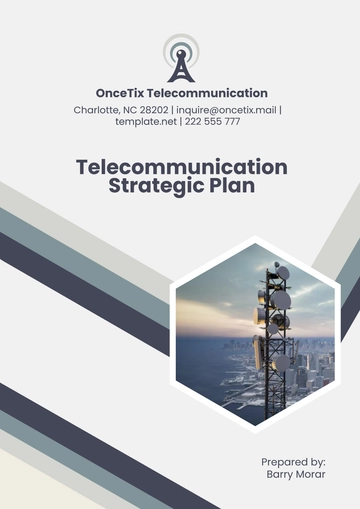Free Strategic Plan For Nonprofits
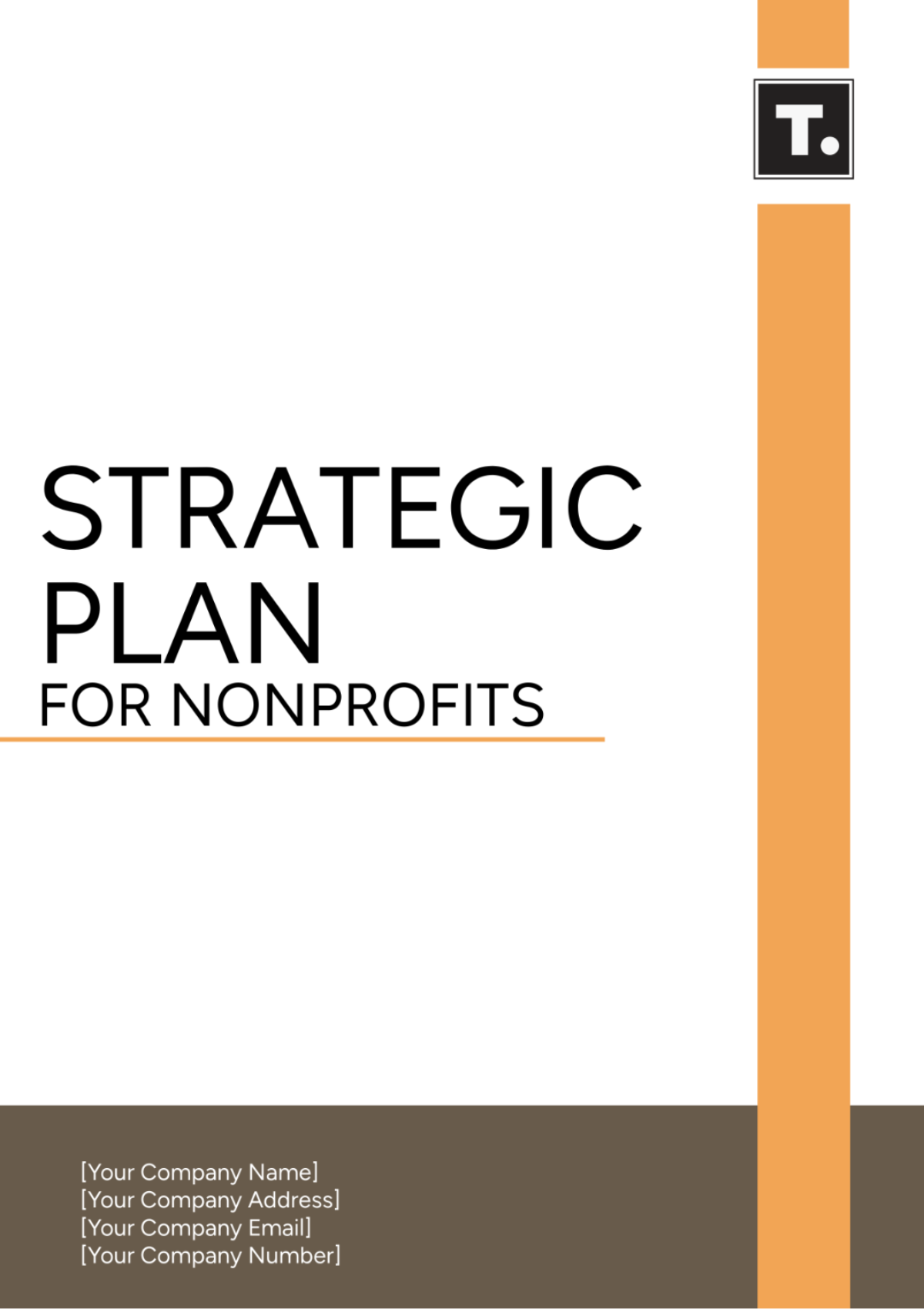
Prepared by: [Your Name]
I. Executive Summary
The executive summary of this strategic plan highlights [Your Company Name]'s commitment to empowering underprivileged youth through education and mentorship.
The plan outlines key strategic goals, including increasing outreach and awareness, enhancing program effectiveness, and fostering community engagement.
By implementing these strategies, [Your Company Name] aims to achieve its mission of breaking the cycle of poverty and providing equal opportunities for all youth.
II. Organizational Overview
Mission Statement: To empower underprivileged youth through education and mentorship, providing them with the tools and opportunities to break the cycle of poverty and achieve their full potential.
Vision Statement: A world where every child has access to quality education and equal opportunities, regardless of their background or circumstances.
Values:
Equality: We believe in equal opportunities for all, irrespective of gender, race, or socioeconomic status.
Empowerment: We empower individuals to take control of their lives and create positive change in their communities.
Integrity: We uphold the highest standards of honesty, transparency, and accountability in all our actions.
Collaboration: We collaborate with partners, volunteers, and communities to maximize our impact and reach more individuals in need.
Innovation: We continuously seek innovative solutions to address the challenges faced by underprivileged youth and communities.
III. Environmental Scan
SWOT Analysis:
Strengths: | Dedicated team of volunteers, strong community partnerships. |
Weaknesses: | Limited funding, small volunteer base. |
Opportunities: | Expanded funding and local business partnerships. |
Threats: | Economic instability, competition from other nonprofits |
PESTLE Analysis:
Political: | Government funding policies. |
Economic: | Changes in funding sources. |
Social: | Community support and engagement. |
Technological: | Advancements in education technology. |
Legal: | Regulatory requirements. |
Environmental: | Environmental impact of programs. |
IV. Strategic Goals
Goal 1: Increase Outreach and Awareness
Objective 1.1: Increase social media engagement by 20% within the next year.
Key Result: Reach 100,000 followers on Instagram and Facebook by December 31, [Year].
Objective 1.2: Host quarterly community events to increase visibility and engagement.
Key Result: Attract a minimum of 200 attendees per event.
Goal 2: Enhance Program Effectiveness
Objective 2.1: Conduct a program evaluation to identify areas for improvement.
Key Result: Implement at least three program enhancements based on evaluation findings.
Objective 2.2: Increase participant satisfaction rate to 90%.
Key Result: Conduct post-program surveys and achieve a satisfaction rate of 90% or higher.
V. Strategies and Tactics
Strategy 1: Digital Marketing
Tactic 1.1: Launch targeted advertising campaigns on Facebook and Instagram.
Timeline: Q1 and Q3 of [Year]
Responsible Party: Marketing Team
Resources Required: $5,000 budget for ads, graphic design, and analytics tools.
Strategy 2: Community Engagement
Tactic 2.1: Collaborate with local organizations to co-host community events.
Timeline: Quarterly events starting in Q2 of [Year]
Responsible Party: Community Engagement Coordinator
Resources Required: $2,000 per event for venue rental, catering, and promotional materials.
VI. Monitoring and Evaluation
KPI 1: Social Media Engagement
Measure: Number of likes, shares, and comments on social media posts.
Target: Increase by 20% within the next year.
KPI 2: Participant Satisfaction
Measure: Percentage of participants satisfied with program services.
Target: Achieve a satisfaction rate of 90% or higher.
VII. Budget and Resources
Budget Item 1: Digital Marketing
Cost: $20,000 per year
Budget Item 2: Community Events
Cost: $8,000 per event x 4 events = $32,000 per year
Total Budget: $52,000 per year
VIII. Risk Management
Risk 1: Funding Shortfalls
Mitigation Strategy: Diversify funding sources and maintain a reserve fund.
Risk 2: Low Community Engagement
Mitigation Strategy: Increase outreach efforts and collaborate with local influencers.
IX. Conclusion
In conclusion, this strategic plan provides a clear roadmap for [Your Company Name] to empower underprivileged youth and achieve its strategic goals.
By focusing on increasing outreach and awareness, enhancing program effectiveness, and fostering community engagement, [Your Company Name] will be able to create a positive impact in the lives of youth and break the cycle of poverty.
[Your Company Name] is committed to implementing this plan and looks forward to achieving its goals in the coming years.
- 100% Customizable, free editor
- Access 1 Million+ Templates, photo’s & graphics
- Download or share as a template
- Click and replace photos, graphics, text, backgrounds
- Resize, crop, AI write & more
- Access advanced editor
Achieve your nonprofit's mission with the Strategic Plan Template for Nonprofits from Template.net. This customizable, downloadable, and printable template provides a comprehensive framework for strategic planning. With editable features in our AI Editor Tool, tailor the plan to your organization's specific needs. Streamline your strategic planning process and ensure success with this invaluable resource.
